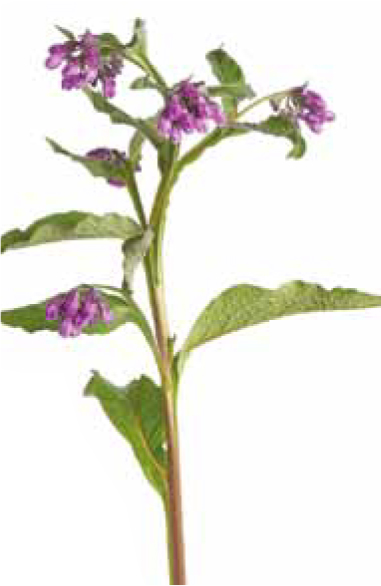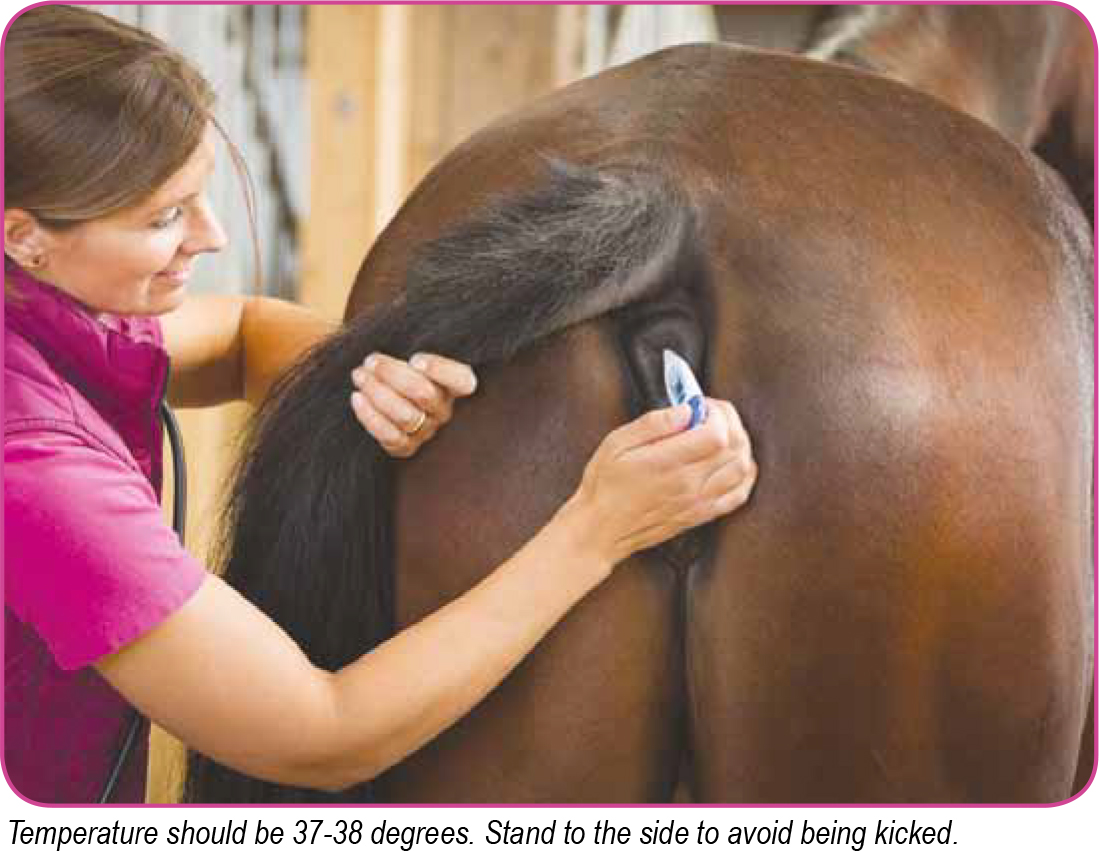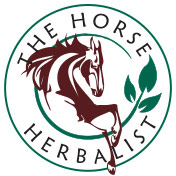
STABLE STAPLES + Vital Signs
This article was written by Angela Davison and printed in Hoofbeats and outlines the handy homeopathic, herbal mixes and Flower Remedies to have on hand in the stable or pantry to calm and soothe those inevitable moments of crisis!
Shock or Rescue Remedy:
Into mouth, and add to drinking water. May also be applied or sprayed onto any part of the body.
 When things go wrong (as they invariably will), always have this on hand for everyone involved (horse, hound, human or otherwise)! It is suitable for use for accidents or emergencies. Dose the injured and the handler. Dosing the injured horse will help the animal calm down and accept help. Dosing the handler will help clear their mind, allowing rational assessment of the situation and injuries. There are no contraindications or drug interactions so this can be given safely in acute situations while waiting for the vet.
When things go wrong (as they invariably will), always have this on hand for everyone involved (horse, hound, human or otherwise)! It is suitable for use for accidents or emergencies. Dose the injured and the handler. Dosing the injured horse will help the animal calm down and accept help. Dosing the handler will help clear their mind, allowing rational assessment of the situation and injuries. There are no contraindications or drug interactions so this can be given safely in acute situations while waiting for the vet.
Arnica homeopathic:
Into mouth, or can add to drinking water.
This can be obtained from your practitioner or Arnica 6 potency can be purchased over the counter from some health stores or chemists. Used for muscular aches, bruising, sprains, or any connective or soft tissue injuries; the dose can be given as soon a problem is suspected. It will reduce inflammation and bruising, relieve pain and /or strain due to overexertion. There are no contraindications or drug interactions so this can be given safely in acute situations while waiting for the vet.
Nux vom or Bell’s homeopathic:
Into mouth, or can add to drinking water.
 A ‘must have’ in your kit. Dose as soon as you think your horse may have any sort of gut ache including colic. There are no contraindications or drug interactions so this can be given safely in acute situations whilst waiting for the vet. Equally useful in humans with nausea, vomiting or diarrhea.
A ‘must have’ in your kit. Dose as soon as you think your horse may have any sort of gut ache including colic. There are no contraindications or drug interactions so this can be given safely in acute situations whilst waiting for the vet. Equally useful in humans with nausea, vomiting or diarrhea.
Aloe barbadensis:
Applied directly to relevant part of the body.
If you only grow one plant, make it this one! The mucilaginous gel is the best anti-inflammatory and pain inhibitor. Bandage swollen legs, poultice painful hooves or hold the gel over any swollen area on the body that can’t be bandaged, including the head. Horses that don’t want their painful swelling touched will soon succumb once the gel is gently held over the area, as it brings rapid relief. Use it on yourself then you will truly know Aloes’ positive power.
Ixodes homeopathic:
Into mouth, or can add to drinking water.
 This is an invaluable homeopathic made from the venom of paralysis tick (Ixodes holocyclus) to help reverse symptoms. Dilated pupils are often the first sign of paralysis tick envenomation, followed by paling of the gum. If you live in a high tick area, make a point of checking eyes and gum of foals, calves, dogs etc. Healthy adult horses don’t have a problem dealing with paralysis ticks unless there is a gross infestation. However, dogs, people and other small or young animals can be affected quite dramatically. Many animals can recover from early stage paralysis if ticks are removed, animal is kept cool, dosed liberally with Ixodes homeopathic and given daily Vitamin C injections. Remove the tick by dabbing with tea tree oil so it starts backing out, then remove with green tick remover purchased from vets. NEVER use tweezers or fingers as this causes tick to inject more venom. If legs are wobbly or breathing labored, take the animal to the vet immediately.
This is an invaluable homeopathic made from the venom of paralysis tick (Ixodes holocyclus) to help reverse symptoms. Dilated pupils are often the first sign of paralysis tick envenomation, followed by paling of the gum. If you live in a high tick area, make a point of checking eyes and gum of foals, calves, dogs etc. Healthy adult horses don’t have a problem dealing with paralysis ticks unless there is a gross infestation. However, dogs, people and other small or young animals can be affected quite dramatically. Many animals can recover from early stage paralysis if ticks are removed, animal is kept cool, dosed liberally with Ixodes homeopathic and given daily Vitamin C injections. Remove the tick by dabbing with tea tree oil so it starts backing out, then remove with green tick remover purchased from vets. NEVER use tweezers or fingers as this causes tick to inject more venom. If legs are wobbly or breathing labored, take the animal to the vet immediately.
Apis homeopathic:
Into mouth, onto the sting, or can add to drinking water.
 For spring and summer bites and stings (bee, wasp, ant etc.) for two legged and four legged animals!
For spring and summer bites and stings (bee, wasp, ant etc.) for two legged and four legged animals!
Slippery Elm powder.
Orally – in feed.
Useful to have on hand for the horses that get loose manure after eating fresh green growth or anything else with high sugar content. Add to the diet of those that lean towards foundering. The mucilages in Slippery Elm help to reduce nutrient flux in the gut, as does Psyllium. This will give some protection from the sugar (fructan)spikes that are so damaging, so this Slippery Elm powder can be included in your founder management protocol.
Calendula Cream:
Topical use only.
For rapid healing of skin abrasions/lesions etc. Calendula is the cream of choice for any skin wound. It is anti-inflammatory, anti- microbial, anti-bacterial and styptic. For use on open wounds, minor burns, inflamed skin, rashes, insect bites etc.
Comfrey:
Topical application.
 An easy plant to grow plus it’s a good soil conditioner. Make a poultice with the leaves and/or roots and apply ASAP to splints. Comfrey speeds up granulation of cells in wounds, however it should always be combined with Calendula, which has an antiseptic action. Comfrey has no antiseptic action so should not be used on open wounds by itself as it will heal over any infection present.
An easy plant to grow plus it’s a good soil conditioner. Make a poultice with the leaves and/or roots and apply ASAP to splints. Comfrey speeds up granulation of cells in wounds, however it should always be combined with Calendula, which has an antiseptic action. Comfrey has no antiseptic action so should not be used on open wounds by itself as it will heal over any infection present.
Vitamin C injectable:
Keep a bottle of Vitamin C in the fridge so it is on hand for snake bite.
Inject 50ml into the muscle on each side of the neck. This can be repeated in an hour if the horse does not show signs of recovery. Your vet will perform a blood test which reveals the type of snake, if it is needed. Vitamin C can also be used similarly with serious infections, in conjunction with antibiotics and herbal treatments.
Angela Davison was one of Australia’ s First Female jockeys before retraining as a a Classical Herbalist, Cranio-Sacral and Equine Bowen Therapist. As well as creating a range of Herbs for Horses (go to www.thehorseherbalist.com), Angela runs Equine First Aid programs and has recently released The Horse Herbalist First Response Kit – perfect for when things go wrong! She is the author of ‘Flower Remedies for Horses, Pets & People’. Find out more at www.thehorseherbalist.com
Checking the VITAL SIGNS by Angela Davison
Check and note vital signs so you can relay them to your vet, plus keep a chart with your horse’s normal signs recorded and that way you can chart your horse’s details during any irregularities and also chart the progress in the recovery period.
TEMPERATURE: Make sure you have a thermometer in your kit. Normal temperature 37-38° C. There are two types of thermometers – the mercury bulb type and the digital type.
Take temperature twice daily, noting patterns and changes.
Taking the temperature:
1. Stand to the near side (left hand side of the horse), close to the horse to avoid being kicked. 2. Lubricate the end of the thermometer with soapy water.
3. If using a mercury thermometer gently shake the mercury down to the bottom of the tube.
4. Lift the tail and gently insert the thermometer (either type) into the horse’s rectum.
5. Keep a good hold on the end of the thermometer to stop it disappearing up the rectum.
6. If you are using a mercury thermometer wait at least 60 seconds before removing the thermometer and reading it.
7. Electronic thermometers will ‘beep’ when an accurate reading is obtained.
HEART RATE: Normal resting rate 38-40 beats per minute.(bpm) Anything over 60bpm in a calm resting horse should be investigated. Over 80bpm in a resting horse is serious. Know your horse’s normal resting heart rate. NB: A Foals resting HR is much higher 70-120bpm.
Taking the heart rate:
There are different locations for taking the heart rate, the easiest being just behind the elbow or the mandibular artery located just under the jaw.

Elbow: Position your horse with his foreleg slightly forward. Standing on the near side, place your hand or stethoscope flat on the horse’s side just behind the elbow. You may need to press quite hard to feel the heart rate. Listen or feel for one minute, counting the beat or count for 15 seconds and multiply by 4. Be sure to count each lub-dub as 1 beat.
Under Jaw: Curl the fingers of your hand and place them in the groove between your horse’s jaws. Pull your fingers back toward the nearest jawbone (mandible) until you feel a cordlike structure. Press that slightly against the jawbone and you will feel the pulse beating.
RESPIRATION:
At rest it should be 8-15 breaths per minute. Respiration should never exceed heart rate.
Taking the respiration rate: Watch or feel your horse’s ribcage/belly for one minute. Be sure to count 1 inhale and 1 exhale as one breath (not as two). If you are having difficulty seeing the ribcage move, try watching the horse’s nostrils or place your hand in front of the nostrils to feel the exhale. Another method is to place a stethascope on the horse’s windpipe to listen to the breathing. You may experience strange sounds if the windpipe is blocked, the horse has allergies or heaves.
DEHYDRATION PINCH TEST:
Pinch an inch of skin on the neck, then release. If skin rapidly springs back, horse is adequately hydrated. If slow to return ( more than a few seconds), horse is dehydrated. If your horse is chronically dehydrated you need to find out why he is not drinking (dirty water, plastic container, something in the water he does not like etc). In acute cases a drip will be required to rehydrate the horse. If dehydrated due to over-exertions, stress, accident or
injury, encourage the horse to drink by providing clean water in a stone or stainless steel container. You can put some sprigs of fresh lavender held down with a stone in the bottom to make the water more appealing. As a last resort use a small amount of molasses (beware! This practice can become an unwanted habit!)
CAPILLARY REFILL TIME (CRT):
Gums, press with one finger on the gum, above the teeth, until white. When you release this the gum should return to normal pink colour within 2 seconds. If colour doesn’t return in this time the horse may be in shock. Shock or Rescue Remedy will alleviate the condition until the vet arrives.
MUCUS MEMBRANES:
Gums, inside eyelids, should be moist and pink. Very pale pink may be fever, anaemia, loss of blood. Yellow indicates liver dysfunction. Grey/blue, may be shock or depression. Bright red, toxicity or mild shock. If Mucus Membranes very pale or yellow, consult vet immediately.
courtesy of www.hoofbeats.com.au
